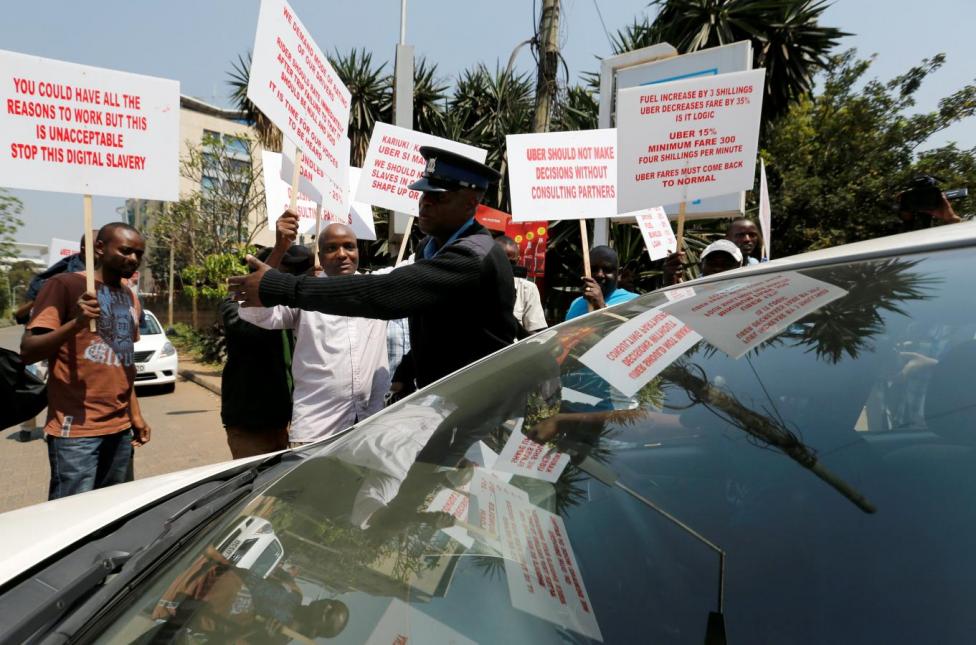Uber drivers in Nairobi are on strike in protest for higher pay. Some of the complaints being tabled by the drivers include; they want to earn like their metered counterparts who earn higher for the same distance an Uber driver would drive. They also want the customer to be billed immediately they request a ride on the app and not the time they get into the taxi. The drivers argue there are times they end up consuming high fuel as they drive around in search of the customer.
The drivers also want Uber to reduce its commission from the current 25% of the fare to 10%. The strike comes hot on the heels of a recent ban of Uber taxis in and around airports in the country citing fair competition concerns. While the ban is still in force, the matter is currently under review by the Competition Authority of Kenya.
Not to forget that in July 2016, Uber announced a 35% price cut. A move largely viewed as a price war tactic to sabotage growing competition in the taxi hailing space in Kenya. A competition that became fierce after entry of the Safaricom-backed, Little.
Before to the price cut, Uber X paid charges to customers were Ksh. 100 base, Ksh. 60 per KM, Ksh. 4 per minute, Ksh. 300 minimum, Ksh. 200 cancellation. With the new price after the price cut, the current charges are; Ksh. 100 base, Ksh. 35 per KM, Ksh. 3 per minute, Ksh.200 minimum, and Ksh. 200 upon cancellation.
Nate Anderson, the Uber Kenya General Manager, said the move to cut down the fare was informed based on the fact that drivers were now doing more trips and waiting fewer time in between waiting for customers. Yes, the fare has become cheaper per trip for the customer, but the drivers are now making more trips per day, which leads to them taking home more than they did before.
Anderson also made the case that with reduced taxi fares, car owners would be more inclined to leave their cars back home, leading to less traffic and less concerned about finding parking.
“Our driver partners are now getting over 70% more trips per day, but working less hours. We continue to have over 100,000 unique people opening our app every single month looking for a safe new ride,” that was the argument Anderson put forth in November. “We are continuously watching and reviewing the effects of the price cut, and we are thrilled that the results show that the price cut is working.”
However, the fact remains that Uber drivers are making less for the same distance compared to their metered counterparts. To make things worse, fuel prices have risen by Ksh. 5. Something that has not been reflected in the Uber fares, and that means it is the drivers cushioning the increase pump prices.



